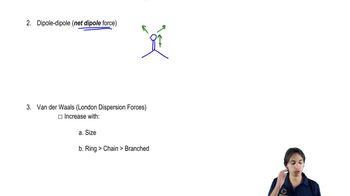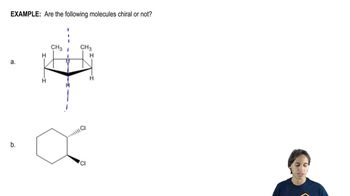Given the Lewis structures, indicate the direction of the dipole moment, if there is one.
(e)

 Verified step by step guidance
Verified step by step guidance Verified video answer for a similar problem:
Verified video answer for a similar problem:



 11:33m
11:33mMaster Differences between ionic, polar and covalent bonds with a bite sized video explanation from Johnny
Start learning